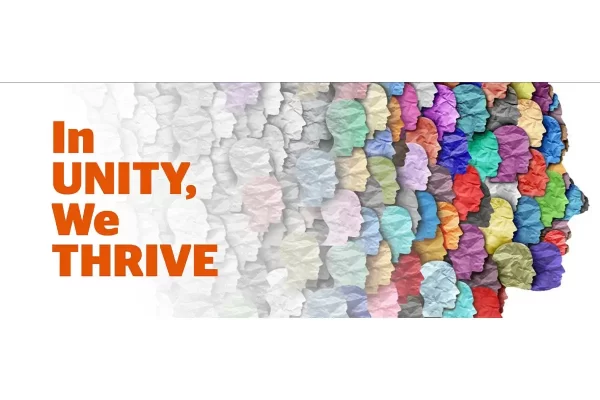The Future Success of Trade Shows: Working Together for Change
The Exhibitor Perspective
April 2021
WHO WE ARE
The Exhibitor Advocacy Group is an ad hoc group whose members come from the corporate exhibitor community, exhibitor-appointed contractors, unions, show management and general service contractors. Our mission is to ensure the successful future of tradeshows, conventions, congresses and other face-to-face business events. Our focus is on promoting transparent and reputable business practices, consistent standards and new business models. We encourage all tradeshow industry constituents to join us in identifying best practices and helping to build a profitable and equitable industry for all constituencies.
BACKGROUND
Before COVID-19, the exhibitor experience on the show floor was deteriorating. Every year, exhibiting costs increased, and issues around transparency, metrics and cost savings became more problematic. Exclusive show site services from the general contractor like material handling, electrical and rigging became more complex and expensive, creating a lack of transparency for these services and the associated costs. Leads and data from attendees became proprietary information of show management, and the data was rarely shared so that exhibitors could calculate a meaningful ROI.
Most importantly, there was a significant lack of support from most show management organizations to find cost savings for exhibitors. Instead, the general contractors’ cost savings went to show management and were subsequently recovered through higher costs to exhibitors. Expenses continued to increase without added value. The industry had become stuck in a rut and very hesitant and reluctant to change. Many shows found themselves in a “business as usual” scenario that added no value to anyone—organizer, attendee or exhibitor.
The dissolution of TSEA (Trade Show Exhibitors Association) left a void for exhibitors to talk openly about their pain points, and therefore, the exhibitor’s voice had no platform. The industry focus has shifted to an attendee-centric model. Regardless of this fact, exhibitor needs are as essential to the ecosystem as the attendee. The entire industry benefits when exhibitors have a voice at the table. For this reason, industry associations like the EDPA (Experiential Designers and Producers Association) have embraced advocating for exhibitors. Just as we reached an inflection point in realizing the need to address the exhibitor’s concerns, COVID-19 shut down the world.
One year later, the exhibit industry recovery appears to be months away. Most predictions give late summer/early fall 2021 as the period of reawakening. As exhibitors, we are thrilled at the prospect of leveraging the advantages of face-to-face marketing to create opportunities that can only be achieved through this medium. At the same time, these lingering exhibition production and business model failures are still evident within our industry—the exhibitor/sponsor segment— and still need resolution. Before returning to the show floor, we believe that now is the time to address these failures to make a better business case in the future for everyone involved.
ISSUES STATEMENT
As the tradeshow and event industry recovers, exhibitors cannot accept a ” return to normal” ” for tradeshows to be included in their post-COVID-19 marketing mix. The pre-COVID-19 environment was already declining and was not working for exhibitors due to a lack of transparency, poor metrics and inflated show service costs. For this industry to be successful, change must happen. Exhibitors are at the center of the ecosystem and typically fund much of the show, so their needs must be recognized and addressed to secure a future for our industry. It is essential that show organizers reevaluate the exhibitor’s role and be open to a dialogue with exhibitors, to understand their needs and concerns.
Transparency is a significant issue for corporate exhibitors. Scrutiny from finance departments can only be answered with vague, “this is how it is” responses. Costs are increasing yearly without transparency to the causes. Services like material handling and booth space costs may double in one year, creating unexpected challenges to an exhibit program and corresponding budget. A small number of shows have started to address these issues (NAB and IMTS in particular), but there is a need for sweeping changes to improve this situation.
Additionally, there is concern about how COVID-related costs for health and safety protocols may affect exhibitors and exacerbate transparency and drive costs for all stakeholders to a significant issue and perhaps even impasse. Exhibitors may bring fewer booth components (less weight) to respond to safety concerns. There is concern about how this will impact the pre-COVID business model. Will general service contractors need to increase exhibitor costs to meet the cost pressures from show organizers? Rising costs to an already broken model will not work—exhibitors are at a tipping point with budgets slashed and a funding shift to focus on digital. The tradeshow business model must change for its future success.
Metrics have long been the currency that allows exhibitors to return to their events year after year. With data becoming more widely available in all business areas, the desire for comprehensive data points specific to each exhibitor’s objectives is a critical need to justify the expense of an exhibit program…Currently, the data provided for evaluating events and measuring ROI is based on volume rather than value. Exhibitors are provided data points such as the number of attendees, click-throughs, etc. These volume metrics do not prove a value case to the exhibitor. Exhibitors must have access to data aligned to their objectives.
Cost Savings will always be a focus for all stakeholders. Exhibitors often experience a lack of support in finding cost-savings opportunities. Many practices and fees are outdated and need to be reviewed. Exhibitors are often footing the bill for the bulk of the event costs without a partnership with show management to identify ways to cut unnecessary costs and focus spend in areas that achieve their objectives. Additionally, we can’t go back to “the way things were” and then add more costs for the new safety measures needed post-COVID, or to make up for the lost revenue of the vendors of these events.
In 2017, the NAB show went through an extensive two-year process to review where exhibitors were spending money and what they are choosing to eliminate due to cost overruns. One of the items uncovered was that exhibitors were starting to shrink space due to the exorbitant costs from exclusive services. The result of the changes they were able to make showed a minimum of 40 percent savings on exclusive services. Show organizers should consider this type of initiative or risk losing exhibiting companies and/or square feet of space purchased/rented.
As part of our industry’s recovery, these issues need to be addressed. The world has changed forever because of COVID-19, and tradeshows and events must change as part of an overall industry and economic recovery. Here’s what the Exhibitor Advocacy Group proposes:
THE WAY FORWARD
First and foremost, exhibitors request open, transparent communication with show management. Exhibitors must have a voice in the recovery of events and cannot be left out of the conversation. There shouldn’t be fear when coming to your exhibitors with the challenges your organization faces. We are partners, and we want to be viewed as such.
Exhibitor advisory committees should be part of every tradeshow event that has exhibiting companies and exhibitor outreach; these committees should not be limited to a single meeting once a year. The pandemic has taught us that situations can change, and adaptation is a new fact of life.
Allow exhibitors to define the value of their industry event and the metrics for success.
- Talk to your exhibitors and determine how they define exhibiting success: number of visitors, qualified leads, social media followers, etc. Then develop ways to help them achieve that success. Remember, exhibitors are not merely paying for space; they pay for access to their markets, to people/buyers, and help with marketing for event attendee. For organizers, this means providing direct and equitable access to the data and making it available pre-show, post-show, and on-show site. This should be the foundation for the event itself, not an opportunity provided at an additional cost.
- Generic data about the success of an event isn’t enough. Exhibitors need specific data to help engage active buyers and better evaluate participation in an event.
- Exhibitors need all demographic data related to the buyers interacting in the virtual
- Exhibitors need to understand which visitors (data points) are from active buyers our own employees, show management, etc.
- Sometimes, the “numbers were not adding up, and the amount of ‘leads’ we got was not worth the dollars we are spending. [There were a] lot of multiple entries in the numbers.”
- Exhibitors need to see all data from each visitor, including name, company, contact info, decision-maker level, etc.
- Exhibitors need behavioral metrics such as dwell time spent interacting with their brand per attendee.
- Exhibitors want to have access to the specific needs, objectives, requests, etc., from buyers so that exhibitors have the same opportunity to research attendees as the attendee has to research exhibitors.
- Exhibitors need all demographic data related to the buyers interacting in the virtual
“Show organizers and associations feel that they “own” the data. But as an exhibitor, I think that data should be shared since exhibitors are paying to participate. If we can’t get the data, then what are we receiving [for our investment]?”
As an industry, we need to be vigilant about finding cost efficiencies associated with our events. Exhibitors can no longer absorb the costs of outdated practices and fees. All stakeholders need to review their pricing models and provide a clear and consistent rationale for these fees.
- Ensure exhibitor show service costs are transparent and fair and don’t include buried charges for non-related services.
- Ensure suppliers and their associated costs are in sync with your vision. They, like you, need to be ready to admit to new realities and align their pricing structures
- Evaluate the types of protections you include for exhibitors in case of cancellation. Although we anticipate that COVID-19 will not be a factor in the future, we’ve seen the effects of a global pandemic on the economy. We need to be prepared for the possibility of future crises. We are all affected by pandemics, terrorism, and natural disasters. Let’s work together to determine how we manage costs associated with the cancellation of events outside our control.
THE BOTTOM LINE
Our industry will survive this bump in the road, but we are highly dependent on each other and need to work together to ensure our industry’s future. If anything, this pandemic has created an appreciation for all the stakeholders that make this industry work. Now is the time to collaborate and brainstorm a better way forward that meets all the stakeholders’ needs. It only works when we work together. Let’s not waste this opportunity to reevaluate and re-imagine our industry. We know we will come out stronger in the end.
Companies with representatives in the Exhibitor Advocacy Group include the following as of April 2021: Bradley Corporation, Carpenters Union, Ever Epic LLC, ExhibitForce, HD Supply, HP, Lower Mountain Consulting, Marvin, Medtronic, Nuvista Event Management, Tradeshow Logic, Tyler Technologies and additional anonymous companies.
Research and data points to support the perspectives outlined in this document were drawn from the following resources:
- Tradeshow Logic: 10 Vendor Strategies to Bring Exhibitors Back the Right Way
- CEIR 2021 Global Virtual Event Trends Report One: Anatomy of Virtual Events and Financial Outcomes
- Tradeshow Logic: Redefining Value for ‘ ‘Today’s Exhibitors & Sponsors, Volume 3, March 2021
This story originally appeared in the May/June 2021 issue of Exhibit City News, p. 29-31. For original layout, visit https://issuu.com/exhibitcitynews/docs/ecn_may-june_2021






























